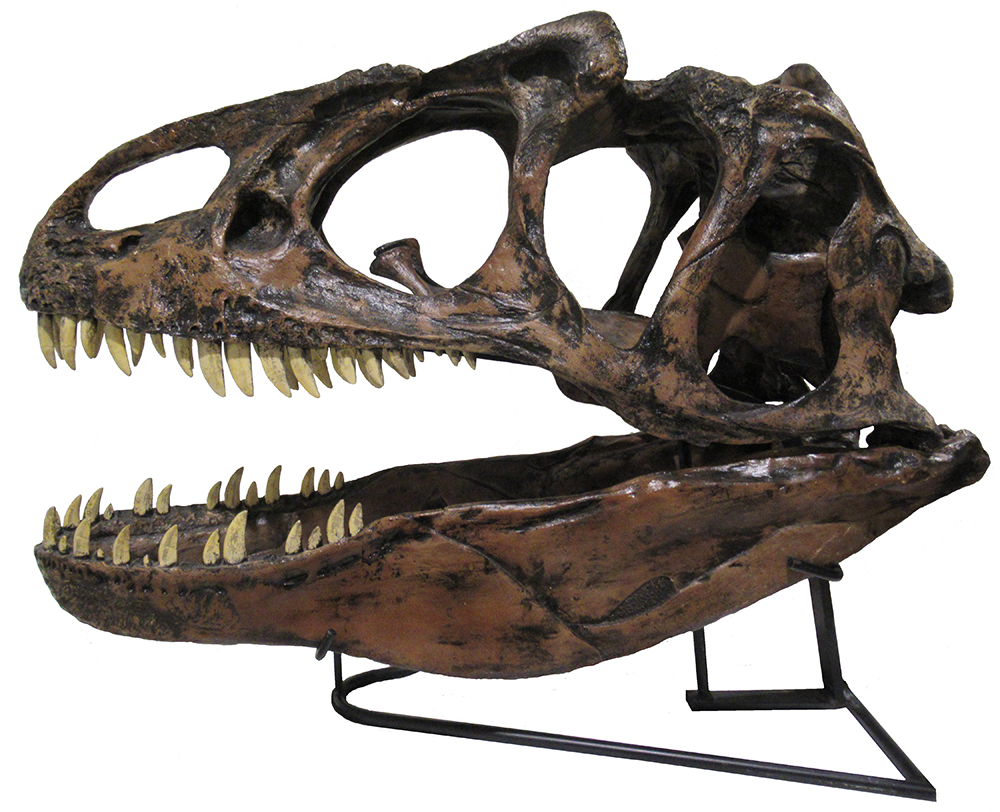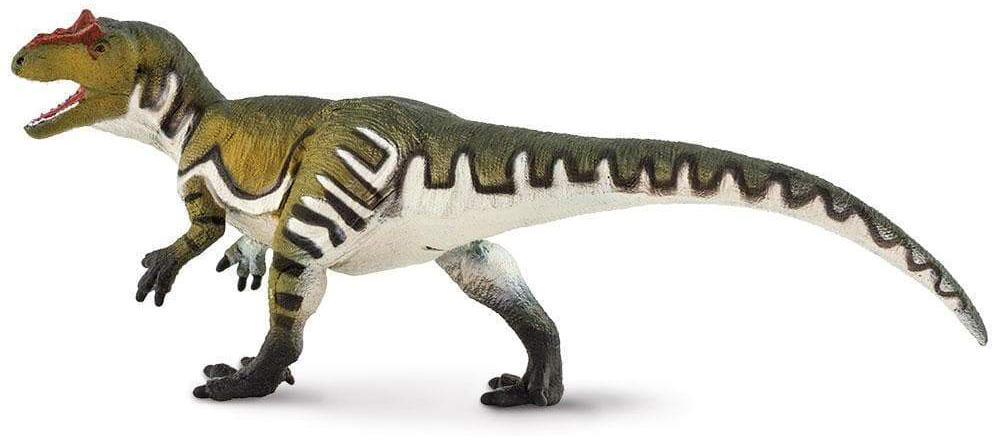Late Jurassic (~155-145 MYA) - theropod dinosaur

Allosaurus fragilis
Allosaurus was a late Jurassic theropod found in North America which at the time was part of Laurasia - the large continent that formed from the breakup of the even more immense supercontinent of Pangea. A large bipedal hunter, Allosaurus was the apex predator of its time (155 to 145 million years ago) and grew to be an average of 8.5 meters long and 2.3 metric tons in weight. Like the rest of its skeleton, nearly everything about its skull design was suited for hunting. The sole exceptions might be the low ridges overs its eyes that were bony bases for keratin ridges that may have played roles in display and identification. Even then, these ridges may have also functioned as ‘sunshades’ for the animal’s eyes, in which case they also played a role in hunting.
Allosaurus’ skull might initially appear to be massive, but upon closer examination the skull has a surprisingly gracile, light design reflected in its species name, Allosaurus fragilis. The skull, like the rest of the skeleton, was narrow and streamlined to facilitate running down prey. Skull bones are thin and there were large fenestrae fore and back of the eye orbits that further lightened the skull’s mass, allowing the skull to move and rotate quickly. This gracile skull design was a strength rather than a weakness for this predator because it provided the skull with flexibility to give slightly with struggling prey, rather than dislocating.
Similarly, Allosaurus teeth were not large and robust, but were thin, curved, slender blades with serrated edges perfectly suited to cut through flesh rather than to crush bone. As you look along the jaw, the teeth vary in size. This size disparity reflects that living allosaurs, unlike mammals, continually replaced their teeth throughout their life. Hence tooth wear did not constrain Allosaurus’ lifespan. In life, Allosaurus also had a remarkable gape, being able to open its jaw to nearly 80°. This large gape was not for biting, as engineering models show the animal’s greatest bite strength occurred at gapes close to 28°. Instead, the wider gape allowed Allosaurus to swing it skull down at prey, like a tooth-lined hatchet that tore into flesh.
Allosaurus’ brain cavity was relatively large, but its design was closer to that of a modern crocodile than to living birds. Similarly, the inner ear structure was also crocodile-like, suggesting Allosaurus’ hearing focused on lower frequency sounds. In addition, its olfactory bulbs were also large suggesting it had a well-developed sense of smell. Its larger brain would have provided Allosaurus with good 3-dimensional spatial skills, necessary for a hunting animal. If you view the skull from the front, you can still discern the eye orbits (the small image identifies the eye openings). This means that if you could confront a living Allosaurus it would not only see you standing in front of it but could accurately judge the necessary distance to swing its skull to strike you or to seize you in its jaws.
But the most frightening thing about this animal is not seen in its skull design, but in the tracks it left behind. Scientists have found trackways in Late Jurassic strata of over twenty adult Allosaurus-sized theropods. Which suggests that if you were indeed gazing into the eyes of a living Allosaurus, there would be a good chance you were already surrounded by the rest of its pack.
